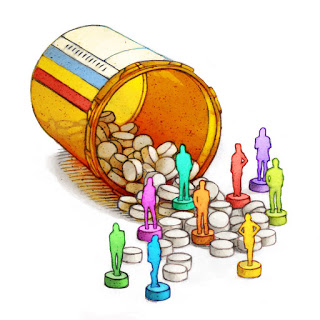 As science continues to uncover new applications of cell, tissue, and gene therapies, regulators are adopting a more flexible, forward-looking perspective on safety and effectiveness.
As science continues to uncover new applications of cell, tissue, and gene therapies, regulators are adopting a more flexible, forward-looking perspective on safety and effectiveness.
Modern cellular, tissue, and gene therapies – which leverage the human body’s self-healing abilities to prevent and treat disease – may someday serve as a panacea for human illness.
While continued advances in science will lead to expanded use cases for these treatments, they may also lead to a new era of life sciences regulation. Randy Prebula and Mike Druckman, who co-lead Hogan Lovells’ Cell, Tissue, and Gene Therapies Working Group, say that as the global health care industry continues to pursue these exciting treatment innovations, it will also have to contend with new regulatory norms that bet on long-term benefits in the face of uncertainty around potential outcomes.
“Cell, tissue, and gene therapy is as broad as the imagination,” says Prebula. “Because of that, some of these products – like fat, organ, or blood cell treatments – are very well regulated and have been for a long time. But some of the emerging products…like CAR-T cells that have been modified to respond to cancer, are now making use of cellular and genetic manipulations to do things that the industry has never seen before.”
The promise of these therapies is that they can approach disease treatment at the patient level, rather than serving as one-size-fits-all drugs for entire populations. But showcasing efficacy for multiple patients is proving to be the biggest challenge for drug makers. “So many of these treatments are specific to a patient’s particular genetic makeup, (which makes it) critical that companies establish who the correct patients are,” says Druckman. “(The) new diagnostic and genotyping programs that companies have developed to employ the help of doctors in screening potential patients are a big step forward in identifying target patient populations. But those programs raise a host of regulatory and practical issues that companies should consider carefully.”
These new levels of uncertainty around patients and outcomes represent unchartered territory for regulators, too. Unlike traditional therapies that have well-defined labeling and marketing, these new innovations – and their potential benefits and risks – may not be fully understood by the marketplace.
Prebula says striking the right balance between safety and effectiveness is something regulatory bodies, including the FDA, are approaching with new levels of open-mindedness. “Twenty years ago, regulatory bodies around the world were much more attuned to asking for absolute proof of benefit in the absence of risk,” he says. “Now they’re starting to recognize that as technology moves forward and the science advances, they need to take a slightly different approach.”
Six draft guidance documents on gene therapies released by FDA in July illustrate the agency’s changing perspective on uncertainty. “One of the important messages that Commissioner Gottlieb issued when [the documents] came out, is that [FDA] recognizes that they can’t wait to know for sure the final results and safety risks of these products,” continues Druckman. “Because [the risks] won’t be immediately evident, it will be important for the agency to accept some level of uncertainty and allow some products on the market, but (also) put in place mechanisms to allow for monitoring in the long term.”
Despite the uncertainty that these therapies create for insurers and regulators, both Prebula and Druckman are excited about their potential for patient treatment. Getting regulators like FDA more comfortable with the approach and science used to develop these therapies will be the biggest hurdle in moving new treatments forward.
“We want to get the regulatory bodies to focus on regulating the platforms for creating [these therapies] so that companies don’t have to prove that every version of every product for every patient is absolutely safe and absolutely effective, but that the process used to develop the product is valid, reproducible, and controlled,” says Prebula. “As more of these therapies emerge, our job will be to help regulatory agencies understand the science, feel comfortable with it, and craft solutions that are reproducible to help these potentially life changing therapies get to patients, but in a way that will be safe.”








